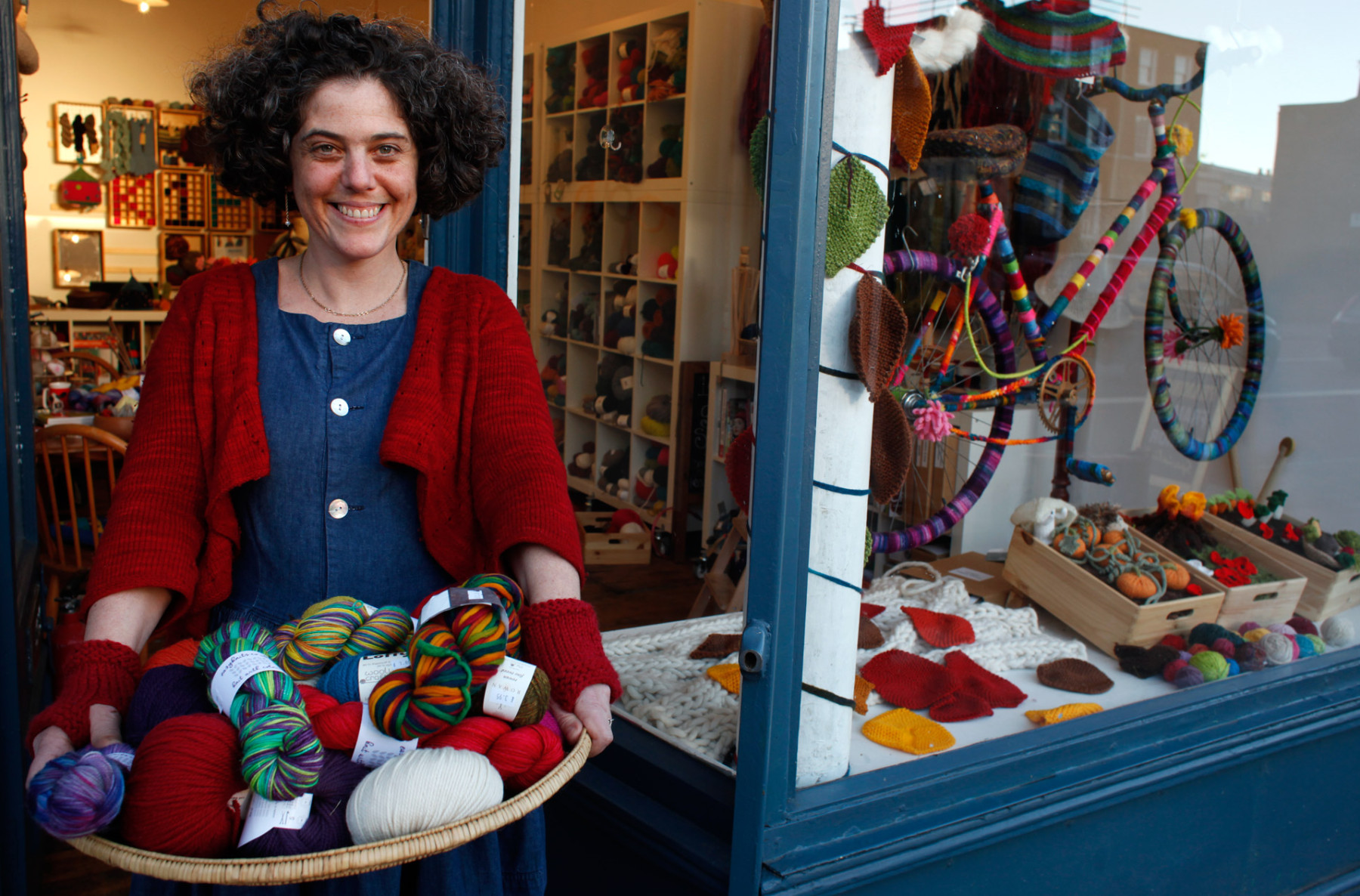I’d got 3 messages in as many minutes, all asking if I was listening to Radio 4.
But with over a hundred parcels still to pack it was Radio 6, not 4 that was keeping us company as I picked, and Brontë wrapped up the mountain of orders that had backed up during our 10 day summer break closed period.
So I duly switched over to Radio 4 to hear the lilting hebridean voice of Alice Starmore, talking about her aunts who used to work as ‘herring girls’ on the Isle of Lewis Herring Stations. In order to prepare the fish, they had to wrap their fingers in calico bandages to protect them from the fish bones and gutting knives. Then during the lull between the boats coming in, they’d unwrap the bandages and turn their hands to knitting ganseys instead.
They worked tightly knit stitches on narrow gauge needles in lanolin soaked lambswool, creating warm, waterproof fabric, with all sorts of details that suited the fisherfolk out at sea like underarm gussets, replaceable cuffs and strong knitted shoulder seams. Beyond the skill needed for these practicalities, the programme presenter called these sweaters ‘an act of love’, as the knitters’ textured stitches told stories that reflected the local landscape – zigzag lines as cliffside pathways, the double zigzag ups and downs of married life, twisting ropes and so on.
Starmore explained that she learned how to knit ganseys from those same aunts, in a way that was akin to learning to walk and talk it was so integral to life in those days. But lives change and with those changes, she lamented there were fewer people wearing, and even fewer making, ganseys.
Today, fishermen can wear sweaters made from artificial fleece fabric which is cheap, warm, machine washable, and dries in no time. This is a world away from the 100+ hours it takes to hand knit a gansey in real wool.
Brontë and I were both so engrossed in this beautifully told rise-and-fall story of the gansey, that it was only when it finished, I realised the contradiction in what we were both busy with in the shop, for I was winding off sweater loads of pure Guernsey 5ply for her to parcel up for the post sack. That day alone we must have sent out at least 6 kilos of Guernsey wool to various customers around the country. A quick check on our last 6 months sales figures shows knitters have bought enough Guernsey 5ply for well over a hundred ganseys.
It seems like whatever the fate of the fishermen’s sweater on the high seas is, it’s alive and thriving on the Lower Clapton Road.
Huge thanks to Gus Casely-Hayford for this wonderful episode of Torn, The Stories Behind the Clothes we Wear (still available on BBC Sounds for anyone that missed it).
And if you would like to join east London’s movement to halt the decline of the Gansey, we recommend 750g-1kg of Pure Guernsey 5ply wool plus any of the following brilliant books:
Knitted Ganseys by Beth Brown-Reinsel
Patterns for Guernseys, Jerseys & Arans by Gladys Thompson
Cornish Guernseys & Knit-frocks by Mary Wright
Traditional Dutch Ganseys for Children by Stella Ruhe
Here I am in the one I knitted back in 2016..


